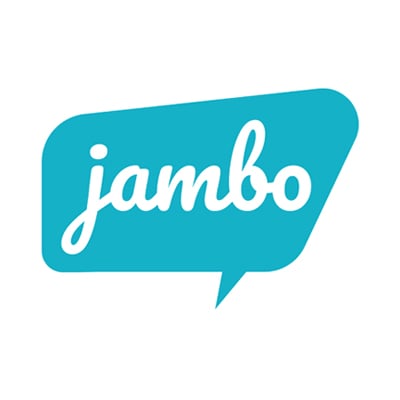
How to lead your team through change to gain buy-in for a new SRM and bonus tips for selecting the best SRM
Once you're ready to adopt a quality Stakeholder Relationship Management (SRM) software to simplify and organize your stakeholder management efforts, ensuring that your team will use the new software can be challenging. Change can be uncomfortable for teams, so to get the most value from a new SRM, it's essential to gain team buy-in before selecting your new software.
To gain buy-in, your teams need to be involved in the decision-making conversations early on, sharing their pain points, understanding what each option can offer them, and feeling like they have a role in the decision. Remember: teams will only use software if it's easy to use and if it helps them achieve their goals.
To help you gain team buy-in, we're sharing four tips along with a few SRM selection tips, so you can be sure you're selecting the best SRM to meet your team's needs.
Four tips to help you gain team buy-in
The following are tips to convince your team members that it's time to adopt a Stakeholder Relationship Management (SRM)software:
Tip 1: Communicate with your teams about a new SRM right from the start
When leading your team through this change, it's essential to involve people in the conversations from the outset. In these early conversations, it is necessary to be transparent about why you want to adopt new Stakeholder Relationship Management software and what challenges this software can help your teams address.
However, this should never be a one-sided conversation! Make sure to open the floor up to your teams and allow them to share any pain points and challenges they face that new software might help address.
This is also an opportunity for people to share what they like about your current process so that you can consider those perspectives as well.
From these conversations, as a team, create a list of your new software's "must-haves" and "nice-to-haves" to help you decide what features your team needs in an SRM. Remember: people support what they help create!
SRM selection tip:
Choosing an SRM that meets most of your team's "must-haves" and "nice-to-haves" will help your team feel heard and help increase the likelihood that they'll use the software, as they know you selected it for their needs. Ensure that you use the list you create with your team when evaluating SRM options.
Tip 2: Guide your team through the process by making training expectations clear
There can be many unknowns for your team with new software:
- Will it be challenging to learn?
- Will it make my job easier or harder?
- What happens if I have questions about using the software?
- How much time will it take to train in the software?
The best way to begin helping your team with these unknowns is to listen to their concerns and find answers to their questions by consulting with SRM providers about training.
You want to select an SRM provider whose training process is streamlined, understandable, and efficient, so that your team knows what to expect from this process. However, as training may not be a significant consideration for everyone (especially teams that won't be using the SRM regularly), you can focus this conversation on the people who will be using the SRM the most.
You can then bring the highlights back to the larger group to share what you're learning about SRM training options and gather their feedback. Remember: having these discussions with your teams helps them understand what's expected of them while making them feel included in the process.
SRM selection tip:
Make sure you select an SRM dedicated to efficient and straightforward training. Proper training is critical in new software adoption, so you want to set your organization up for success by choosing an SRM provider dedicated to training your team fast and easily in the system. With that said, each SRM provider has its own unique training and implementation process, so you'll want to do your research.
To learn about our SRM, Jambo's, implementation and training process, check out our blog→
Tip 3: Have team members share their own perspectives on why a new SRM is important
Chances are, you likely already have a team member or two who face challenges that a new SRM would solve. Ask your team members if they'd be willing to share their stakeholder management challenges and how a new SRM could help them (this could be a brief presentation during one of the early conversations we mentioned above).
Ideally, this is a participant who has already bought into the idea of new software. Try finding a participant who is not in management and would use the software regularly to help build trust, so that it doesn't just feel like management is pushing an idea.
SRM selection tip:
Make sure the SRM options you're looking at are meeting these participant(s )' pain points, as their stories may have a lasting impact on the rest of the team. For example, if they share frustration over how long it takes to input a communication record with your current system, ensure you choose SRM options that streamline the input process, making it fast and easy to use.
Tip 4: Invite some of your team to participate in SRM demos
When you reach the stage where you're ready to book SRM demos, involve some of your team members so they can see the software options, ask the providers questions, and be part of the decision-making process.
Demos are a great way to share the excitement, especially when you find the right Stakeholder Relationship Management (SRM) software for your team. What your team sees and learns in these demos is something fun they can share with others, which helps build excitement and interest with the rest of the team.
SRM selection tip:
Look for SRM providers who can meet your team's demo needs. Whether you want to book a team demo or a few individual ones, choose providers willing to work with you and your team.
Additionally, look for an SRM provider that offers demos specifically tailored to your industry. Industry-specific demos help you understand how the software can assist you in meeting your organization's unique needs.
Interested in a Jambo demo? Learn our top three reasons for booking a free demo with us!
Choosing your best Stakeholder Relationship Management (SRM) software for team buy-in
The goal of introducing a new SRM into your organization is to enable you and your teams to manage stakeholder information more effectively, allowing you to utilize it for improved project or stakeholder management outcomes. However, to use your data as efficiently as possible, your teams must use the software. As we mentioned above, they'll only use the software if it helps them achieve their goals (ideally, quickly and easily).
With this in mind, you should avoid software that's confusing, clunky, or frustrating to use, as no one will buy into software that makes their jobs harder.
To avoid these issues, your organization needs a well-designed SRM that's been created specifically for stakeholder management. The SRM should work well, be enjoyable to use and help foster collaboration across your teams.
The ultimate checklist for SRM buyers
To help you lead your team through this decision and brainstorm features you might like in your SRM, we've developed this comprehensive checklist to help you while you research options. To download a free copy of the checklist, click the image below!
If you have any questions, the Jambo team is available to help!






